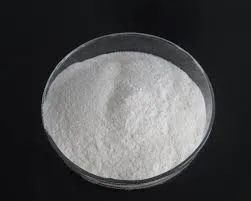
Avg . 19, 2024 02:09 Back to list
Hydroxyethyl Cellulose Market Trends and Pricing Analysis for 2023
Understanding Hydroxyethyl Cellulose Price Trends
Hydroxyethyl cellulose (HEC) is a non-ionic cellulose ether that is soluble in water and widely used in various industries, including pharmaceuticals, cosmetics, food, and construction. Its unique properties, such as thickening, gelling, and film-forming capabilities, have made it a popular choice among manufacturers. Given its significance across various applications, the pricing of HEC has garnered substantial attention, influenced by several market dynamics.
Factors Influencing Hydroxyethyl Cellulose Prices
1. Raw Material Costs The production of hydroxyethyl cellulose primarily relies on cellulose, which is derived from plant sources such as wood pulp and cotton. Fluctuations in the availability and price of these raw materials can significantly impact HEC pricing. For instance, global climatic conditions, trade tariffs, and the sustainability provisions affecting raw material sourcing can lead to price volatility.
2. Production Processes The manufacturing process of HEC is complex and can be affected by energy costs, labor costs, and technological advancements. Any increase in energy prices or wages can contribute to higher production costs, subsequently influencing the final price of hydroxyethyl cellulose.
3. Market Demand Demand from various end-use industries plays a critical role in shaping HEC prices. The pharmaceutical industry demands HEC for its applications in drug formulation and controlled release systems, while the cosmetic sector utilizes it for creating emulsions and gels. Increasing consumer demand for personal care products, along with ongoing innovations in drug delivery systems, often drives up prices as manufacturers strive to meet the heightened needs.
4. Competitive Landscape The hydroxyethyl cellulose market features both large multinational corporations and smaller niche players. The level of competition can affect pricing strategies, with companies pulling prices down to gain market share or establishing premium pricing for high-quality or specialized products. The recent trend toward sustainability and eco-friendly products has also encouraged many companies to invest in greener production techniques, potentially affecting both costs and prices.
hydroxyethyl cellulose price

5. Global Economic Conditions Economic factors such as inflation, currency fluctuations, and geopolitical tensions can impact the overall market dynamics. For instance, the COVID-19 pandemic illustrated how supply chains could be disrupted, leading to both shortages and price surges. A downturn in the economy might reduce demand, while an upturn might encourage increased production and potentially stabilize or lower prices.
Regional Price Variations
HEC prices can vary significantly from one region to another based on local economic conditions, regulations, and market demand. In regions with robust pharmaceutical and cosmetic industries, demand for HEC is typically higher, leading to potentially elevated price levels. Conversely, in areas with less industrial activity, prices might be lower due to reduced demand.
Future Outlook
The future of hydroxyethyl cellulose pricing will likely continue to be influenced by the factors mentioned above, along with emerging trends such as digital transformation in manufacturing and shifts towards green chemistry practices. As consumers increasingly favor sustainable products, companies that can adapt to these changes while managing costs effectively may find themselves in a favorable position in the HEC market.
In conclusion, while the price of hydroxyethyl cellulose is subject to fluctuations due to a variety of market dynamics, understanding these underlying factors can help stakeholders make informed decisions. Whether one is a manufacturer, supplier, or end-user, being aware of the trends in HEC pricing will be essential for strategic planning and sourcing decisions in the coming years.
-
Versatile Hpmc Uses in Different Industries
NewsJun.19,2025
-
Redispersible Powder's Role in Enhancing Durability of Construction Products
NewsJun.19,2025
-
Hydroxyethyl Cellulose Applications Driving Green Industrial Processes
NewsJun.19,2025
-
Exploring Different Redispersible Polymer Powder
NewsJun.19,2025
-
Choosing the Right Mortar Bonding Agent
NewsJun.19,2025
-
Applications and Significance of China Hpmc in Modern Industries
NewsJun.19,2025







